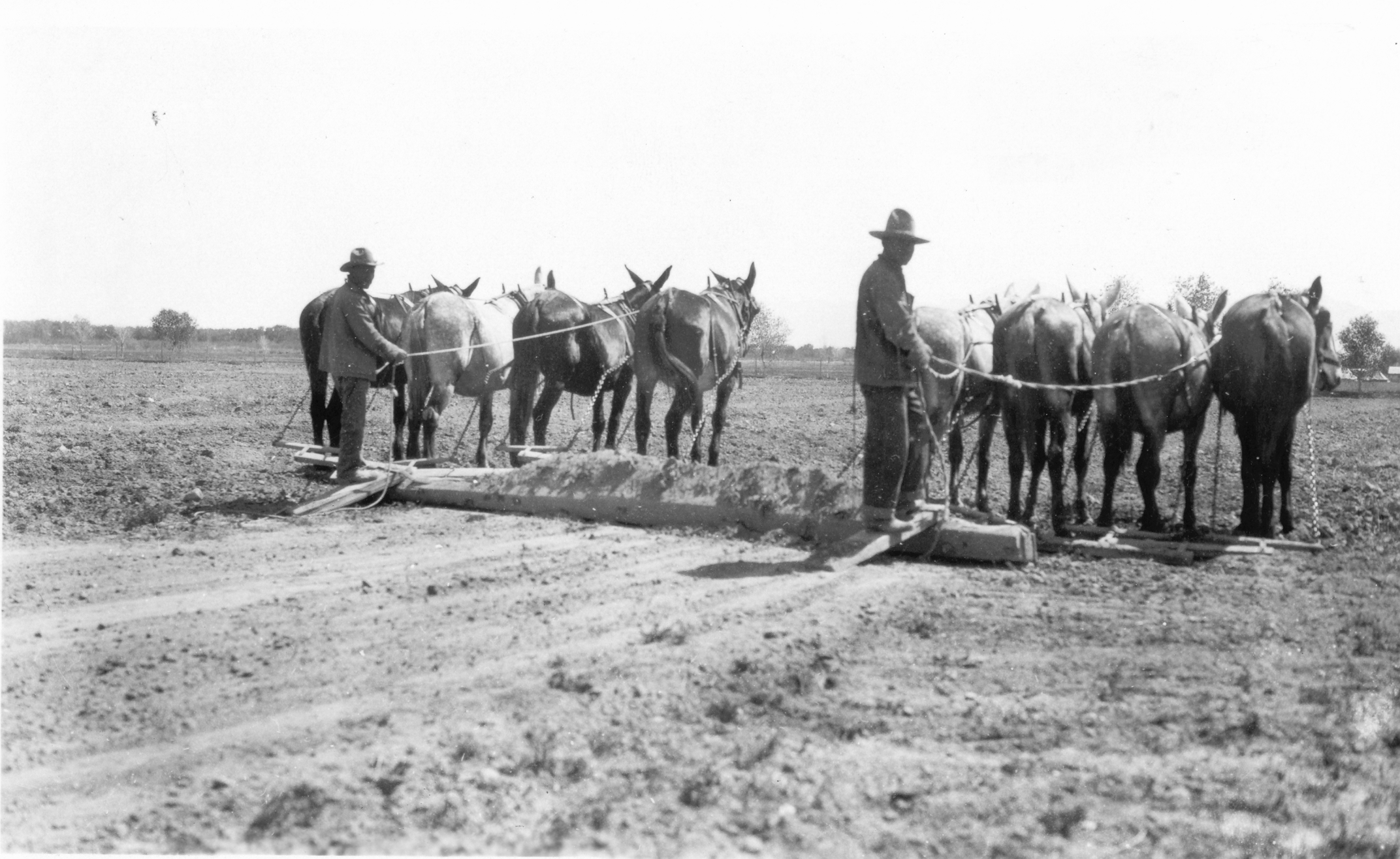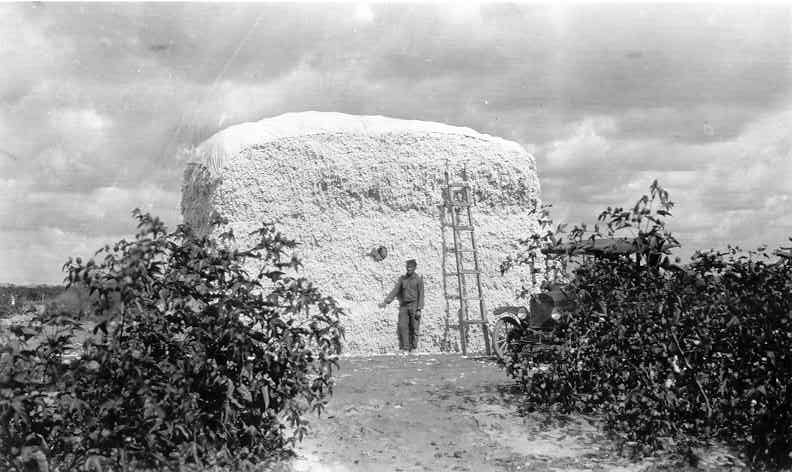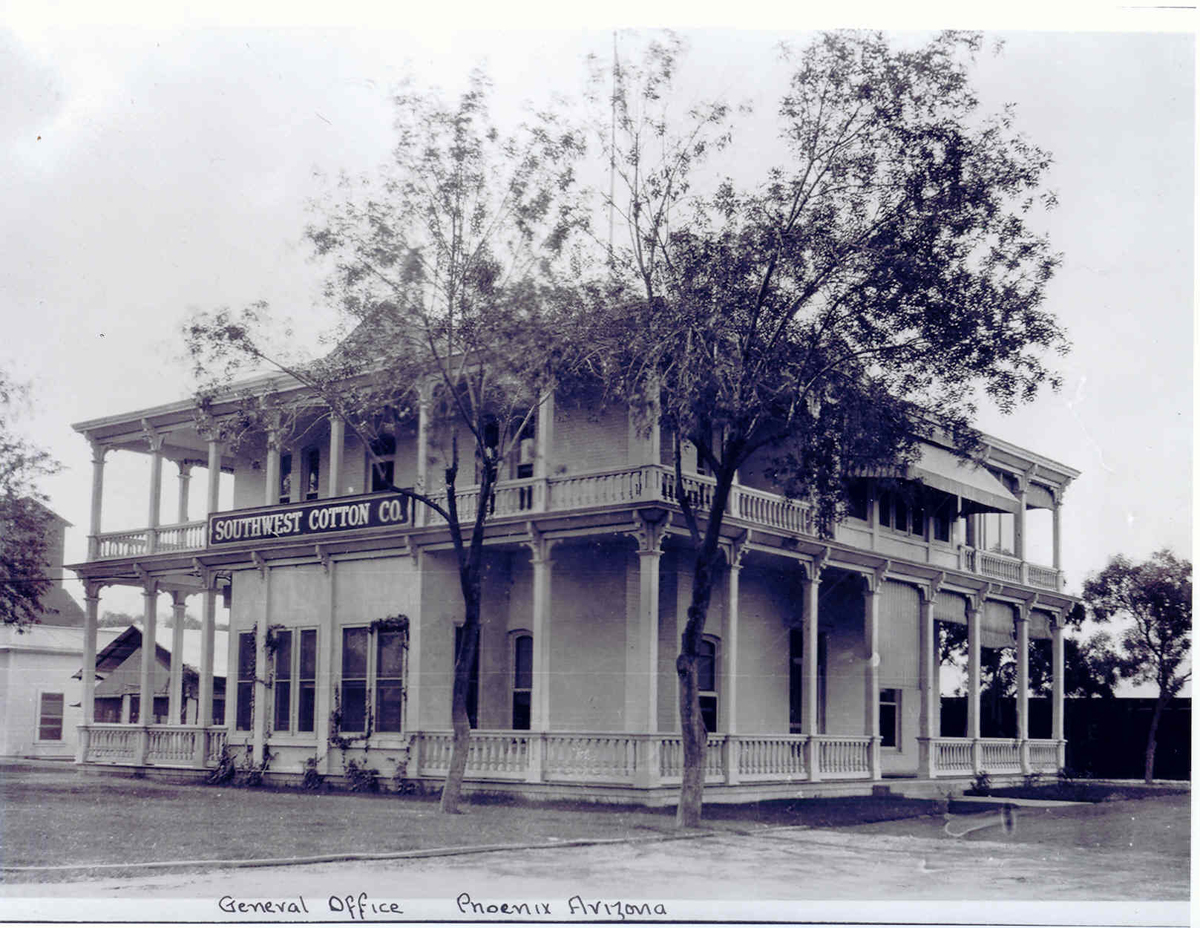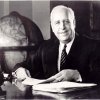Arrival of GOODYEAR TIRE and RUBBER CO
Arrival of GOODYEAR TIRE and RUBBER CO, – 1916 Planting Cotton
Litchfield Park had a unique start as it grew out of the need for long staple cotton. Mr. Paul Litchfield, the founder, worked for Goodyear Tire & Rubber Company headquartered in Akron, Ohio. Paul Litchfield a Chemical Engineer, who graduated from MIT, went to work for Goodyear in 1900, at the start of the new Age of Transportation. In 1903 he designed and patented the pneumatic tire. It needed long staple cotton fiber to give the cord strength. The best grade of long staple Pima Cotton came from Egypt. German U Boats cut off the supply from Egypt during WWI. The major cotton crops in the United States were in Georgia and South Carolina and they had been infested with boll weevils.
 The transportation industry was just getting started and Mr. Litchfield could see the great potential for cars, trucks, and buses. The cotton for his pneumatic tire was urgently needed. The only way to get the needed cotton was to plant it. Mr. Litchfield studied the U.S. Department of Agriculture reports that said Arizona was compatible to Egypt in climate and soil conditions and cotton would grow there.
The transportation industry was just getting started and Mr. Litchfield could see the great potential for cars, trucks, and buses. The cotton for his pneumatic tire was urgently needed. The only way to get the needed cotton was to plant it. Mr. Litchfield studied the U.S. Department of Agriculture reports that said Arizona was compatible to Egypt in climate and soil conditions and cotton would grow there.
Mr. Litchfield convinced the Goodyear Tire & Rubber Company to start a cotton operation in Arizona. Dr. Chandler, a Veterinarian from Chandler, Arizona leased 8,000 acres to Goodyear. The Chandler operation was known as Goodyear and the area is now called Ocotillo. This was a successful start, but more cotton was needed. The Goodyear Corporation purchased land at Grant and 7th Street in Phoenix and built a Southwest Cotton Company office. This gave the company an office to purchase cotton from local cotton growers.
There was still a need for more cotton and this brought Mr. Litchfield to the West Valley of Phoenix. An early group of settlers from California had settled in the area of Litchfield Park in 1910. They had cleared around 5000 acres of desert land. When Mr. Litchfield arrived in 1916 they were willing to sell their land for as little as $25 an acre. The total land purchase in the Litchfield Park area was 16,000 acres to plant more cotton.
 Mr. Litchfield brought in 2500 men and 1200 mules to start clearing the desert. Workers were brought in from Mexico, Texas, Indian Reservations and the local area. The land was cleared with mules by dragging it with railroad ties used as scrapers.
Mr. Litchfield brought in 2500 men and 1200 mules to start clearing the desert. Workers were brought in from Mexico, Texas, Indian Reservations and the local area. The land was cleared with mules by dragging it with railroad ties used as scrapers.
Iron wheeled gasoline engine tractors, leased from a California company, were used to provide power for clearing the desert of cactus, sagebrush, mesquite and other vegetation.
Approximately 3500 acres were cleared and leveled and planting started in January of 1917. By September of 1917, 1500 bales of cotton had been produced. One year later 6,734,000 pounds of cotton was picked. There were 1200 mules used from 1917-1919 and by 1929, it took only 200 mules and 35 tractors to do the work. In 1932, a significant development in rubber tires for tractors and other farm equipment was introduced and the need for mules was eliminated by 1936.
Cotton production was so good that a six-stand gin was installed by 1920. A six-press cotton oil mill built in Phoenix in 1918 was enlarged in 1920 to handle 124 tons of cotton seed a day. Goodyear produced this “White Gold” for their new pneumatic tires.




